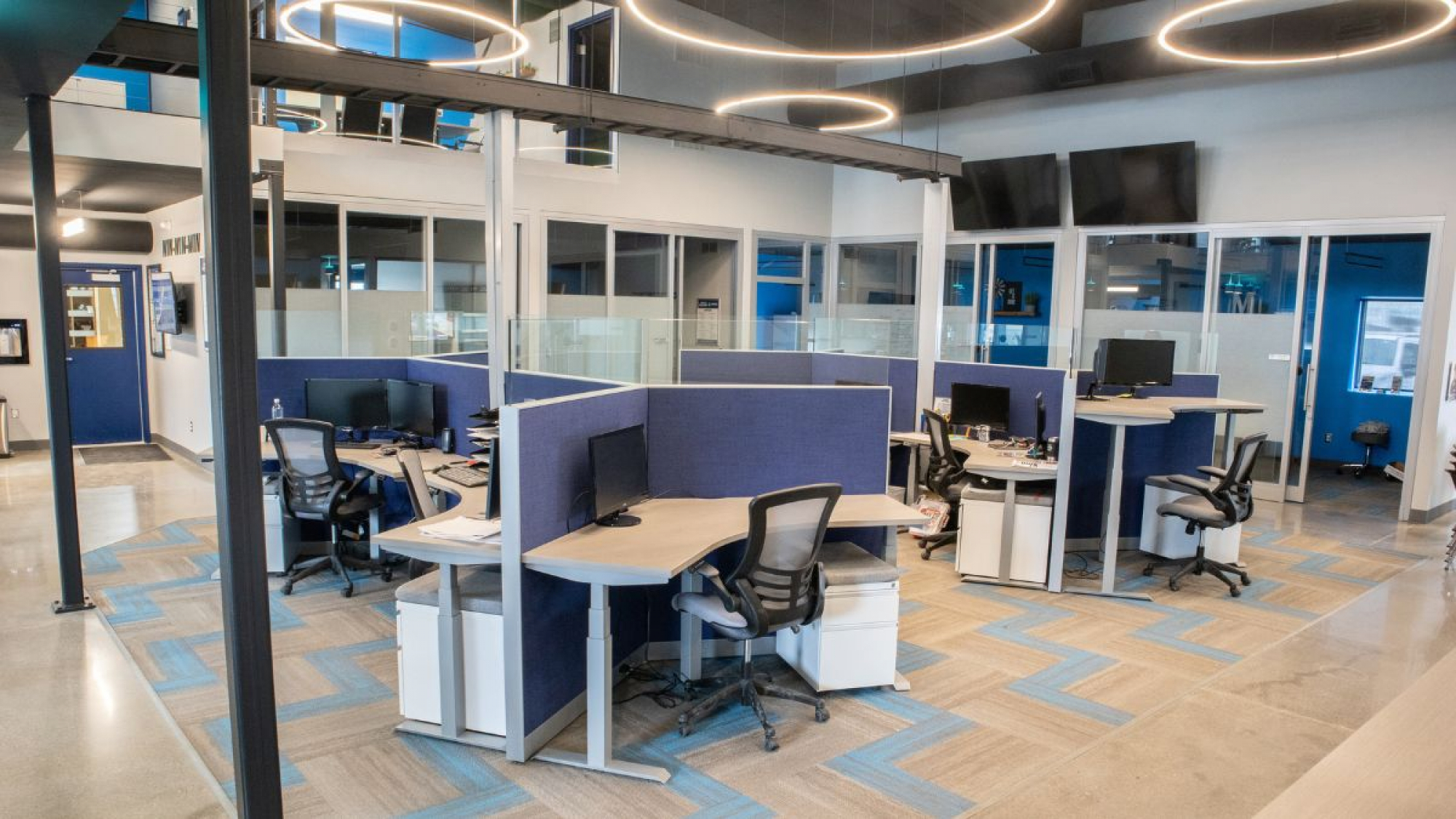In today’s dynamic work environment, the physical layout of an office plays a crucial role in influencing company culture, employee engagement, and operational efficiency. Discover the pros and cons of open office layouts to determine the ideal configuration for your business.
The Pros
Open office layouts have increasingly become a symbol of the modern, collaborative workplace, aiming to foster a sense of community and facilitate easier communication among team members.
Collaboration
Open office layouts significantly enhance collaboration among employees. By removing physical barriers, such as walls and doors, team members can engage more easily and spontaneously with one another. This setup encourages the exchange of ideas and feedback, making brainstorming and problem-solving as a group simpler.
Space Efficiency
Space efficiency is another notable advantage of open office layouts. These designs often allow for a more flexible use of the office space, accommodating more employees within the same footprint compared to traditional, compartmentalized offices. Furthermore, open spaces can be easily reconfigured to suit changing business needs or team sizes, providing adaptability that is hard to achieve with more rigid office structures.
Community and Camaraderie
The sense of community and camaraderie fostered by open office layouts is unparalleled. Employees working in such environments often feel a stronger connection with their colleagues, as the lack of physical barriers encourages more frequent interaction and socialization. This can lead to a more enjoyable workplace atmosphere where team members feel more united in their shared goals and daily tasks. A solid workplace community ultimately translates to superior office productivity.
The Cons
While open office layouts have plenty of advantages, they do come with distinct challenges that have the potential to impact employee satisfaction and productivity.
Noise Levels
One of the most significant drawbacks of open office layouts is the increased noise levels. Without the buffering effect of walls and doors, the sounds of conversations, phone calls, and even keyboard tapping can accumulate, leading to a noisy workspace. This constant background noise can distract employees, reducing their ability to concentrate and impacting their productivity.
Lack of Privacy
Employees in open office spaces often find it challenging to conduct confidential conversations or focus on individual tasks without fear of being overheard or observed by their colleagues. This can hinder personal and sensitive discussions and impede the ability to concentrate on complex tasks. Furthermore, the constant visibility can lead to a feeling of being under constant surveillance, which may increase stress levels and decrease overall job satisfaction.
The Final Verdict
When weighing the pros and cons of open office layouts for your business, the key benefits of enhanced collaboration, space efficiency, and a strengthened sense of community can significantly contribute to a vibrant and dynamic work environment. However, certain office spaces work best with fewer distractions and greater privacy—these businesses benefit more from traditional office configurations.
A professional design expert can offer invaluable insights into how an office’s physical layout can be optimized to balance these pros and cons, tailoring the workspace to support both the company’s operational needs and the well-being of its employees. Find the ideal option for your business with our industry-leading office furniture design services here at Create Spaces.
Receive our Newsletter
To receive our newsletter, including new editions of spaces and other digital content, fill out the form:



